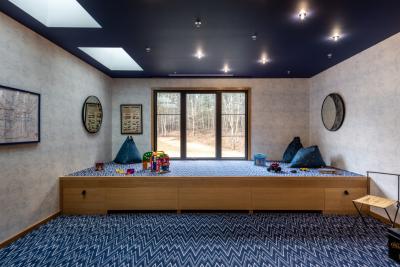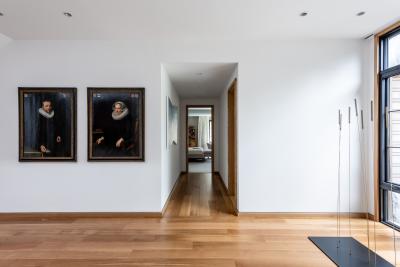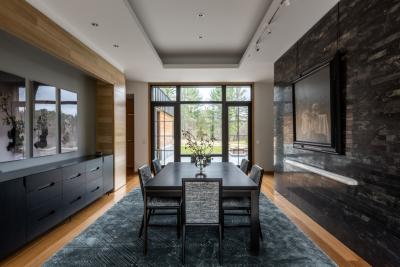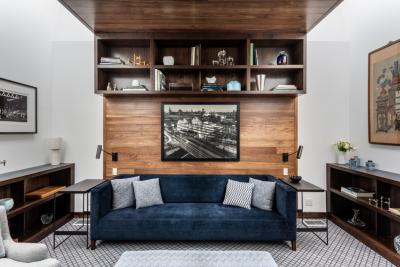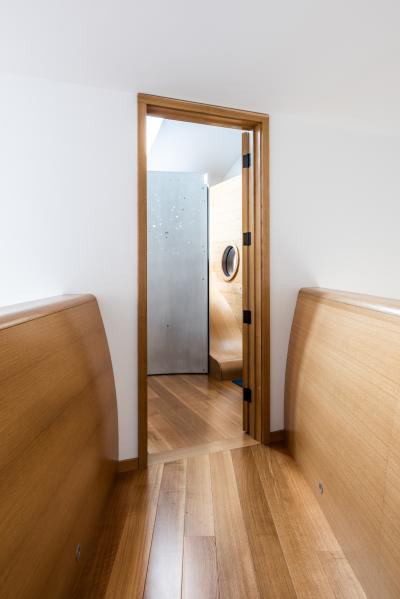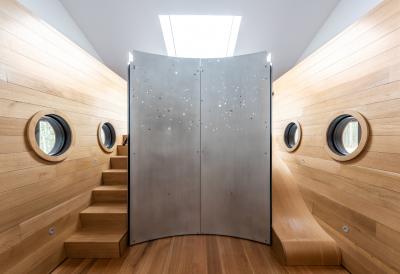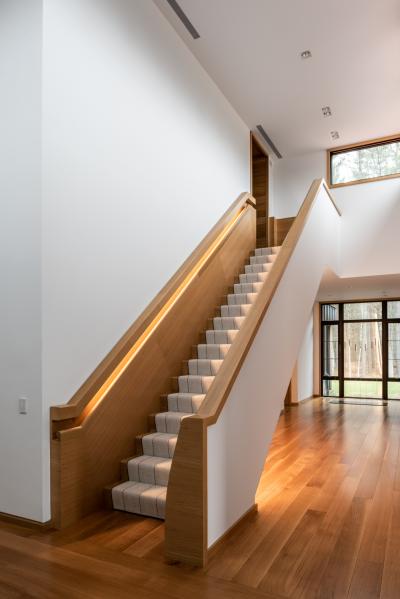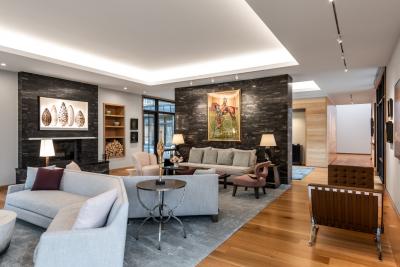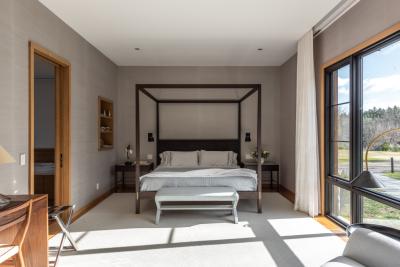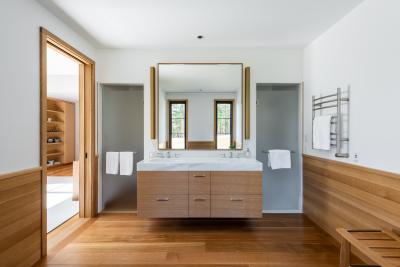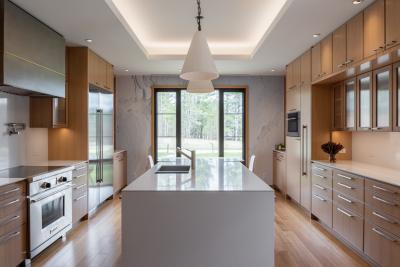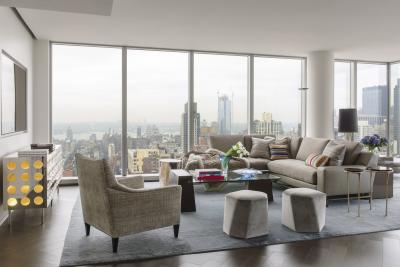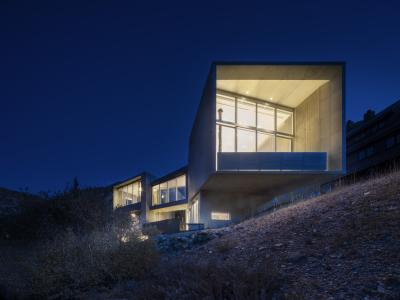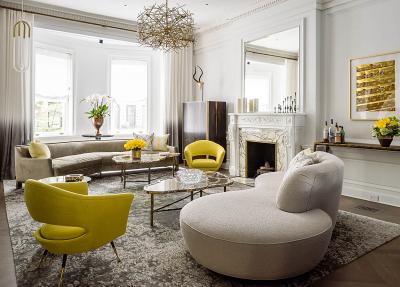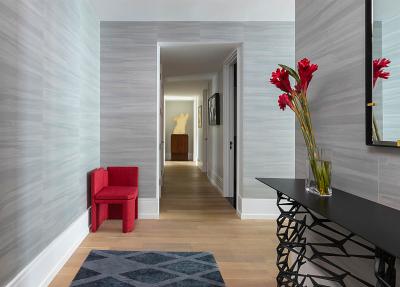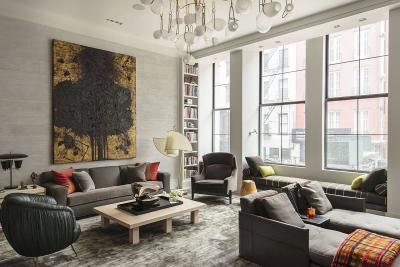Dower House
A gathering place for three generations of one family, this contemporary farmhouse sits in a woodland clearing at the foot of the Berkshire Mountains in Massachusetts, an area to which its owners have a deep connection. It is anchored to its rural setting by a restrained palette of natural materials and a simple arrangement of predominantly horizontal forms. Although it is a large house, its understated external appearance and expansive glazing mean that it settles comfortably into its surroundings.
The house serves as a home for a semi-retired couple, whose brief required that the home should comfortably accommodate their extended family, as well as their collection of art. The interior layout creates intimate spaces to be enjoyed when just the owners are in residence, as well as areas for when the wider family comes together. Children are especially catered to with an upstairs playroom, and a central tower for stargazing accessed via a bridge that spans a double-height gallery. A retractable skylight opens to the night sky over a lookout platform, where a telescope is fitted for the owners and their grandchildren to study the seasonally changing arrangement of planets and constellations. The folly is symbolic of the owners’ desire for their home to serve as a place to spend time with family while immersed in nature and was a key factor in the house’s organization.
Double-height galleries used to display the couple’s art are important devices in the organization of the interior plan, too. ‘Public’ living spaces fall to one side of the main gallery space running north–south from the entry, and rooms used for retreat are arranged to the other side of this double-height volume. The gallery spaces effectively delineate those parts of the house that can be closed off when not in use, to create a more intimate living.
Timber features prominently inside and out, and plays an important role in helping the house to harmonize with the natural environment. The horizontality of the exterior form is expressed in timber boards that alternate in width, while the tower form is clad in thinner, vertical boards. A locally sourced granite at the base of the exterior walls literally anchors the house to its site, and a deep copper fascia around the upper and lower roofs further emphasizes the house’s horizontality.
Photographer: Alan Tansey
© DHD / ALL RIGHTS RESERVED.
The house serves as a home for a semi-retired couple, whose brief required that the home should comfortably accommodate their extended family, as well as their collection of art. The interior layout creates intimate spaces to be enjoyed when just the owners are in residence, as well as areas for when the wider family comes together. Children are especially catered to with an upstairs playroom, and a central tower for stargazing accessed via a bridge that spans a double-height gallery. A retractable skylight opens to the night sky over a lookout platform, where a telescope is fitted for the owners and their grandchildren to study the seasonally changing arrangement of planets and constellations. The folly is symbolic of the owners’ desire for their home to serve as a place to spend time with family while immersed in nature and was a key factor in the house’s organization.
Double-height galleries used to display the couple’s art are important devices in the organization of the interior plan, too. ‘Public’ living spaces fall to one side of the main gallery space running north–south from the entry, and rooms used for retreat are arranged to the other side of this double-height volume. The gallery spaces effectively delineate those parts of the house that can be closed off when not in use, to create a more intimate living.
Timber features prominently inside and out, and plays an important role in helping the house to harmonize with the natural environment. The horizontality of the exterior form is expressed in timber boards that alternate in width, while the tower form is clad in thinner, vertical boards. A locally sourced granite at the base of the exterior walls literally anchors the house to its site, and a deep copper fascia around the upper and lower roofs further emphasizes the house’s horizontality.
Photographer: Alan Tansey
© DHD / ALL RIGHTS RESERVED.















